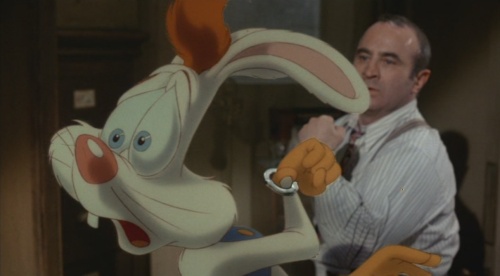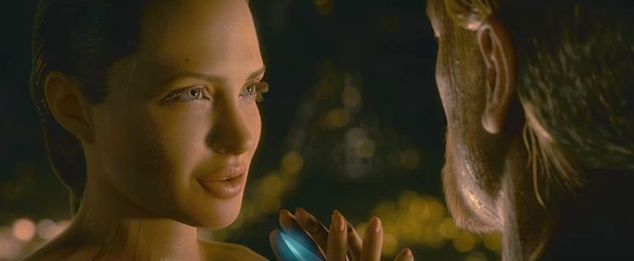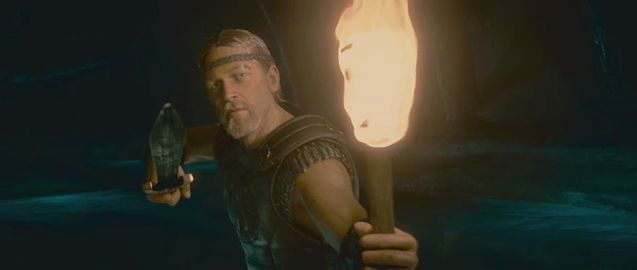As an urban planner and a filmy watchy guy, I’m particularly fascinated by the way our ideas about cities and towns are shaped by the environments we see in film and television. You can get a giant size chunk of my research on this by reading the essay here, but as another little snippet, consider Hill Valley in Back to the Future.
zemeckis
Avatar (James Cameron, 2009)
James Cameron’s long-awaited Avatar is at once a state-of-the-art journey through imagined interstellar landscapes, and a rather more prosaic expedition through familiar story-telling terrain. “Great effects, so-so story” is perhaps the classic form of review for post-1977 Hollywood movies, and it’s a little sheepishly that critics have arrived once again at this basic conclusion. Yet, they have, in droves, because at the fundamental level that’s the key conclusion to be drawn about Avatar. The more interesting points to make about the film, then, aren’t those most important but most obvious observations. The sub-plots here – like the progress of James Cameron’s once-imposing directorial career, or whether the film is a giant leap in the evolution of film technology – are rather more interesting.
Robert Zemeckis’ new computer-animated epic Beowulf is modelled as the future of cinema. Designed for high-definition digital 3-D projection, it is Hollywood’s latest attempt to create a unique theatrical experience that can’t be downloaded. Yet the film is something of an oddity. Despite Zemeckis having paid tribute to the classic cartoonists with his 1988 feature Who Framed Roger Rabbit?, his new film is deeply at odds with the traditional practice of animation.
Beowulf advances “performance-capture” techniques Zemeckis had previously used on his 2004 film The Polar Express, in which the movements of actors are mapped directly onto digital characters. Peter Jackson did a similar thing to use performances by Andy Serkis as the basis for Gollum in his Lord of the Rings trilogy and Kong in King Kong, with celebrated results. Yet Jackson was working to achieve characters that couldn’t be achieved by traditional means, and the motion-captured performance was considerably reworked by a team of animators.
Beowulf (Robert Zemeckis, 2007)
Beowulf is a test-bed for a combination of technologies that might be the future of the movies. It utilises “performance capture” animation, which some think will revolutionise computer animation. In many theatres it is being exhibited in 3-D, and that technology is acting as something of a trojan horse for the accelerated roll-out of digital cinemas. And its regular theatrical release is paired with showings in IMAX. It’s all very reminiscent of the 1950s, when extreme widescreen processes and early 3-D were used to try to give theatrical exhibition a competitive advantage against the threat of television. Today, the threats are DVD and illegal downloads, but the impetus is much the same. And Robert Zemeckis, in particular, has devoted much of the last decade to this technology: he hasn’t made a live-action film since 2000’s Cast Away, and won’t for some years (with his next picture locked in as the computer-animated A Christmas Tale, due in 2009).
A new trailer for Robert Zemeckis’ Beowulf has hit the net.
I’ll skip my standard spiel on the uncanny valley (see here for some of my earlier comments). What this Beowulf trailer made me think about is how conflicted I am about the potential of these sort of highly digitised movies. By that I mean movies where most or all of the environments are either computer generated sets, or highly manipulated with computers, whether these use human actors (as in Sin City) or live-action-like motion-capped animation (a la Polar Express or Beowulf). The divide between the animated and non-animated films in this genre seems to be largely trivial now: because these projects use animation that is motion-capped off real performers, and which aspires to photorealism, in an aesthetic sense they are essentially the same thing. (True animated films, like those made by Pixar, are a different beast again.)

Who Framed Roger Rabbit? (Robert Zemeckis, 1988)
When people talk of the revival of animation in the 1990s, they tend to date the start of the resurgence from Disney’s 1989 feature The Little Mermaid. Certainly there is more continuity in personnel between The Little Mermaid and the 90s hits (such as Aladdin, Beauty and the Beast, and The Lion King) than there is with Who Framed Roger Rabbit. Yet I would argue that the strength of the 90s boom came from the fact that it crossed over into adult audiences: this is clearer when one looks past just the Disney films and considers the full array of animation that sprang out of this period, which includes not only the wave of excellent computer animation (Toy Story, Antz, Monsters Inc, Shrek) but also television work (“The Simpsons,” “Futurama,” “South Park,” and many others). The fact that adults were prepared to go along to these films, or watch these shows, contributed significantly to their success. Adults did so largely because appreciation of the Hollywood tradition of classical animation had bubbled through to the mainstream. People who grew up with the cartoons of the “Golden Age” of the 1930s to 1950s (a staple on TV from the 1960s onwards) were now adults who appreciated the quality of what they had seen. Who Framed Roger Rabbit, Robert Zemeckis’ elaborate tribute to Hollywood cartoons, served as a marker for this nostalgia, and hinted at the widening of the audience for animation that occurred in the 90s. Yet it still provokes mixed feelings amongst animation fans.
Contact (Robert Zemeckis), 1997
An afterword at the end of the late Carl Sagan’s novel Contact notes that it started as a film treatment written in the early 1980s. For several years it was a project for Australian director George Miller, but he jumped ship as the budget skyrocketed. Now, finally, Contact arrives courtesy of Robert Zemeckis and preceded by ecstatic reviews from the US critics.
Forrest Gump (Robert Zemeckis), 1994
“Being an idiot is no box of chocolates.” – Forrest Gump, by Winston Groom
“Life is like a box of chocolates: you never know what you’re going to get.” – Forrest Gump, by Robert Zemeckis
You know the plot: idiot grows up in Alabama and wanders through recent American history, witnessing astounding events and meeting great men (plus a few US Presidents). Academy Awards follow his every step.


